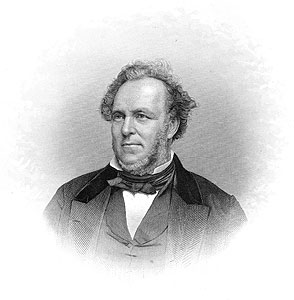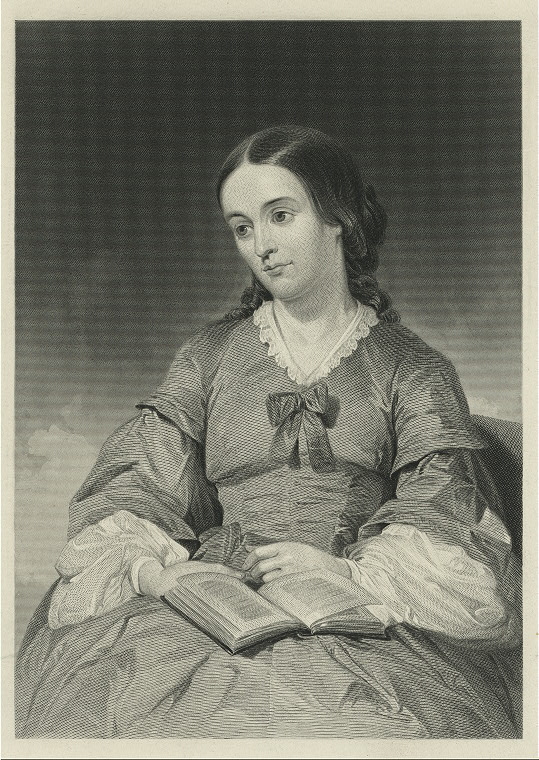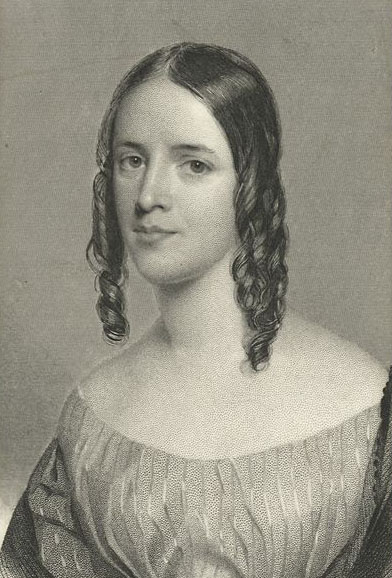Nineteenth-Century Science
First, I am going to propose what a researcher might have to do to conduct a comprehensive study of Poe’s 1848 book, Eureka: A Prose Poem. Then, I am going to explain why I decided not to fall into the trap of attempting to evaluate Poe’s final work. As I noted in my previous Poe and Science Blogs, in 2012 and 2013 , I attempted to design a Prospectus on Eureka for my M.A. Thesis in English Literature at the Virginia Commonwealth University. To that end, I worked with Chris Semtner at the Edgar Allan Poe Museum in Richmond and several professors at VCU putting together a few draft versions on a proposal to evaluate Eureka. I spent hours in libraries reviewing articles and even books that scholars had written about Eureka. I transcribed Moon-Notes, a scientific manuscript that Poe had written to assist him with several works he was writing. And finally, I took a trip to New York, to the noted collector, Susan Jaffe Tane’s home, to examine Poe’s personal copy of Eureka. This book is now the most valuable first-edition since it contains hand-edited notes by Poe indicating that he had intended to revise and expand his work in a later edition. It is hard to determine conclusively why Poe decided to attempt to write and publish this comprehensive poetic, historical, scientific, and metaphysical treatise after having established a highly recognizable career as a poet and fiction writer, but there are some clues.
In 1847, after recovering from a serious illness, the death of his wife, and facing the prospects of his own mortality, Poe decided to conduct research on astronomy and cosmology. Perhaps he hoped he might be able to unify the differing theories about the universe that were being advanced by competing disciplines and to publish his conclusions in a single book. By that period, astronomers had developed more powerful telescopes than had been available at any previous time. These instruments could discern details of celestial bodies which were at the far edges of the Solar System and beyond. Undoubtedly, Poe was attempting to gain a greater understanding of the most credible theories about the origins and operational details of the Universe. He was seeking answers to the mysteries surrounding the greater meaning of life and existence. As if those questions weren’t comprehensive and mysterious enough, he also decided to address what happens to humans after they died, a topic which he had often explored in great detail in his previous poetry and science fiction writing.
After he finally published Eureka: A Prose Poem in 1848, he suggested that his book should not be evaluated until after he died (Preface of Eureka). Prior to its publication, he informed his publisher, George P. Putnam, that Eureka would one day found to be “of greater importance than Newton’s discovery of gravitation.” He considered it the culmination of his life’s work” (Broussard 52). Once Eureka was published, Poe resumed a lecture tour and promoted his book until his death in 1849. In the Preface, he suggested that though his book is “True,” it should only be read for the “Beauty that abounds in Truth.”
Eureka remains for us as Poe’s most enigmatic work. Even the most ardent Poe experts are baffled when trying to read or understand the book. To this date, no one has been able to conduct a comprehensive evaluation of Poe’s most enigmatic work. Literary critic, Charles Baxter, in Burning Down The House, writes about a literary device that has often been employed by fiction writers, called defamiliarization. In this technique, everyday scenes take place in unexpected settings; or unfamiliar scenes takes place in everyday settings (21). Avid readers of Poe are very familiar with his writing style and literary themes but are often unfamiliar with the subject matter of Poe’s culminating poetic-science treatise. Some critics have noted that Eureka is too scientific for literature and too literary for science. Scientists who have considered Poe’s book have generally not considered him sufficiently qualified to write on complex scientific subjects and literary scholars are often too baffled to attempt to apply the tools of literary criticism on Poe’s science book. Prominent nineteenth-century scientist, Alexander von Humboldt (to whom Poe dedicated Eureka) wrote that “he enjoyed Poe’s latest satire on science” (Levine 118). Henry Lee (Hal) Poe a descendant of E.A. Poe’s cousin (William Poe) and a prominent E.A. Poe researcher stated that until the last quarter century many researchers were quick to dismiss Eureka as being too difficult to understand. As evidence to that assumption, they concluded that, in Eureka, Poe had “gone around the bend.” Hal Poe contends that the easiest course, both for Poe enthusiasts and detractors, has been to dismiss the work in its entirety. However, during the modern era, there has also been another growing group of literary, historical, and science researchers who have been willing to take a fresh look at the work (H.L. Poe, ix).
After more than a year of Eureka research, I concluded that to gain a fuller understanding of Poe’s culminating book, I would first need to determine whether Poe’s interest in science in Eureka was an anomaly or a continuation of his previous interest in that topic. Therefore, I shifted my research priority to trace the development of Poe’s science-based themes throughout his pre-Eureka, poetic, non-fiction, and fictional writing. I wondered if an understanding of Poe’s previous works might help me to better understand Eureka. Although I was still enthusiastic about conducting research on Poe and Science, I did not believe that I was ready or able to accept Poe’s challenge of evaluating Eureka almost 170 years after Poe published his book. Several previous researchers had attempted to use traditional methods of critiquing literary or scientific research with Eureka but had produced inconclusive results. Using the pitfalls of these previous research studies as cautionary guidelines, I decided, instead, to construct some questions that other scholars might need to consider before attempting to conduct a comprehensive evaluation of Eureka. I delineated these questions in 2013 both at the William & Mary Literature and History Conference and the Positively Poe Conference at the University of Virginia.
Research Questions about Eureka
- What are the major scientific themes embedded in Poe’s poetry, non-fiction, and fictional writing?
- Were Poe’s previous science themes continued in Eureka or was his book an anomalous work?
- Would an understanding the historical, cultural, and scientific contexts of the nineteenth-century to help modern researchers to better understand Eureka?
- How does Eureka help modern scholars to understand how the nineteenth-century public received and interpreted news about science and technology?
- What are the major scientific theories that informed Poe as he was writing Eureka?
- How did critics respond to Eureka in and after Poe’s lifetime, and what is the validity of their responses?
- What are the literary techniques Poe used in writing Eureka and does he follow his own standards?
- What are the theories and conclusions that Poe reached in his treatise?
- What is the significance of Eureka in Poe’s Canon, in English Literature, and in science history?
Re-Assessment of Eureka Needed?
The conclusion I reached after considering these research questions is that for me to complete a comprehensive evaluation of Eureka, I would need to conduct a multi-perspective study, requiring a combination of literary analysis, historical, and scientific research. I concluded that I would not be able to complete such a study within the time that I had left in my M.A. program. Anyone conducting such a study would need to employ the ingenious inductive, deductive, and ratiocinative methods of Poe’s Detective C. Auguste Dupin to unravel the many seemingly unsolvable puzzles of Eureka. Poe defines ratiocination as the process of reasoning or forming accurate conclusions from known and observed premises as a method of solving complex and seemingly irresolvable mysteries. Ratiocination combines the use of considerable intellect, intuition, and creative imagination. Poe’s previous detective writing and columns on cryptography demonstrate that he was interested in posing and resolving complex problems. He created Dupin as a literary figure to solve the most complex enigmas and conundrums by using the highest form of human discovery available to the human mind. It is possible, then, that Poe wrote Eureka as a puzzle, and left obscure clues for his readers to solve like he done in his earlier cryptography newspaper columns. However, solutions to the puzzles and mysteries Poe posed in Eureka have evaded researchers and readers for almost one hundred and seventy years. In my next Poe and Science column, I will explain why I decided not to focus my M.A. Thesis research on evaluating Eureka but, instead, on the general topic of Poe and Science.
Selected Resources
Baxter, Charles. Burning Down the House: Essays on Fiction. Minneapolis: Graywolf Press, 2008.
Broussard, Louis. The Measure of Poe. Norman: University of Oklahoma Press, 1969.
Daniels, George. American Science in the Age of Jackson. NY: Columbia UP, 1968.
Levine, Stuart and Susan F. Levine. Eureka. Eds. Urbana: University of Illinois Press, 2004.
Ostram, John, Ed. The Notes of Edgar Allan Poe. New York: Guardian Press, 1966.
Poe, Edgar Allan. Eureka A Prose Poem. New York: George P. Putnam, 1848.
____ “Moon Notes,” Scanned copy of eight un-numbered and unordered pages handwritten by Edgar Allan Poe Museum, Richmond, VA: MS (Museum Catalogue # 2012.2.44). Manuscript
Poe, Henry Lee. Evermore: Edgar Allan Poe and the Mystery of the Universe. Waco, Texas: Baylor University Press, 2012.
Silverman, Kenneth. Edgar A. Poe: A Biography. New York: Harper Collins, 1991.
Thomas, Dwight and David Jackson. Eds. The Poe Log- A Documentary Life of Edgar Allan Poe 1809 – 1849. Boston: G.B. Hall and Company, 1987.
##############################
Murray Ellison received a Master’s in Education at Temple University (1973), a Master’s of Arts in English Literature at VCU (2015), and a Doctorate in Education at Virginia Tech in 1987. He is married and has three adult employed daughters. He retired as the Virginia Director of Community Corrections for the Department of Correctional Education in 2009. Currently, he serves as a literature teacher, board member, and curriculum advisor for the Lifelong Learning Institute in Chesterfield, Virginia, and is the founder and chief editor of the literary blog, www.LitChatte.com. He is an editor for the “Correctional Education Magazine,” and editing a book of poetry written by an Indian mystic. He also serves as a board member, volunteer tour guide, poetry judge, and all-around helper at the Edgar Allan Poe Museum in Richmond Virginia. You can write to Murray by leaving a Comment or at ellisonms2@vcu.edu
Murray at the Richmond Poe Museum









